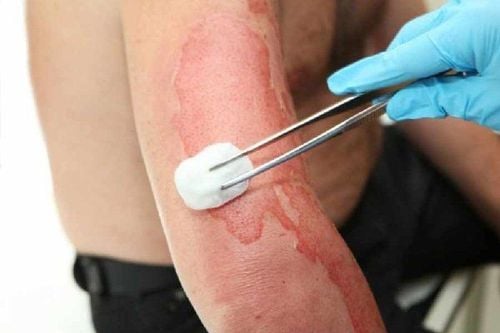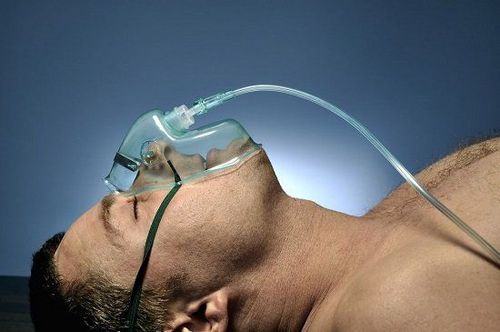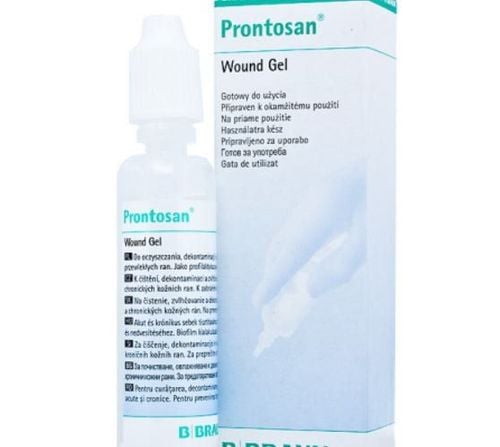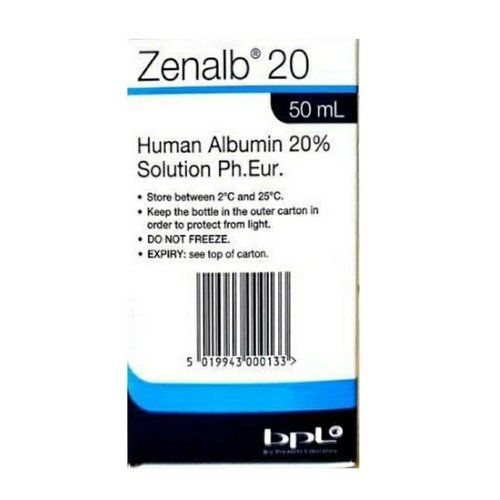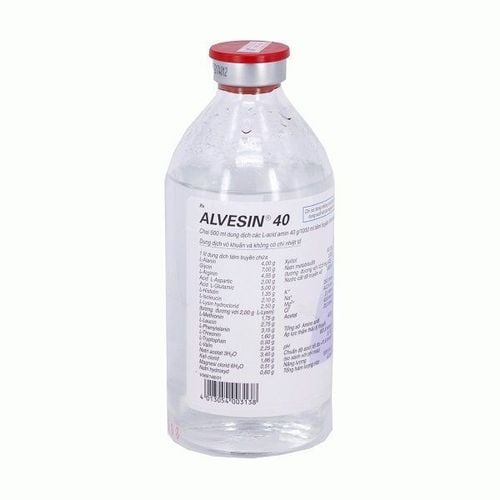This is an automatically translated article.
The article was written by Specialist Doctor II Phan Phi Tuan - Head of General Surgery Department, Department of General Surgery - Vinmec Phu Quoc International General Hospital.The clinical manifestations of burn shock are very diverse, depending on the general burn area, the deep burn area, first aid, previous first aid, general health, comorbidities... There are two types of manifestations: erectile shock and weak shock.
1. Diamond shock
Manifestations of overcompensated state, notably circulatory centralization, are common in patients who arrive early, in the first hours after burns or in patients with mild and moderate burns (according to Visnhepski 1967: encountered 12). ,5%).
Manifestations: Excitement, fatigue, increased arterial blood pressure, increased CVP, rapid pulse, bouncing. A transient increase in blood pressure due to increased secretion of excitatory vasoconstrictor centers. Cathecholamines cause vasoconstriction. Rapid deep breathing due to excitement of the respiratory center. Erectile dysfunction can be reversed if the burn area is not large, the patient is treated promptly. In case of severe burns and/or improper first aid, complicated comorbidities... , erectile shock can turn into debilitating shock.
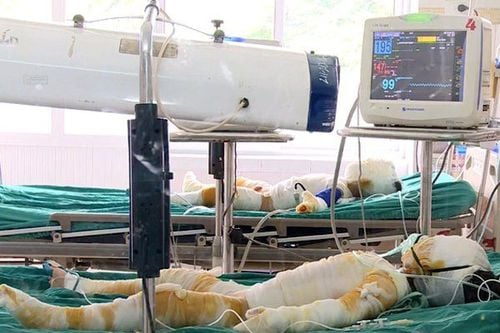
Khi sốc cương cần được điều trị kịp thời để tránh chuyển thành sốc nhược
2. Weak shock
May appear as late as several hours (5-6 hours), parallel plasma leakage and decrease in circulating blood volume, may also occur after additional trauma during transportation, when handling the wound Soon. If the burn is wide and deep, debilitating shock may appear immediately, often severe with the following manifestations:Neuropsychiatric: May be in a state of mental stimulation or inhibition from the beginning.
Stimulus : Patient, anxious, struggling, complaining of pain, cold cry, muscle tremors, shivering. Thirsty, asking to drink but still conscious. This state lasts 1-2 hours, then gradually transitions to an inhibited state.
Suppression: patient is indifferent to the external environment, slow response calls. The sensation of pain is mostly reduced, but any factors: dressing, transportation, changing position, pain sensation increase. More severe, the patient may be comatose, pupils dilated. Children may convulsions, cyanosis, foaming at the mouth, rolling eyes.... Sometimes there are symptoms of autonomic disorders: sweating, cold limbs.
Body temperature: Body temperature often drops, can be below 35.50C, in children and some elderly people can have high fever, convulsions, can be fatal. Convulsions in children in the period of shock can also be caused by severe hypoxia, electrolyte disturbances, hypoglycemia....If the body temperature is too high or too low, the prognosis is severe.
Circulatory: Small fast pulse, sometimes weak, can't catch, sometimes even large arteries like femoral and carotid arteries can't be caught. This is an important symptom of burn shock. Rapid pulse due to decrease in blood pressure stimulates the heart center to beat faster. Weak pulse due to decreased circulating blood volume.
Decreased central venous blood pressure (CVP), double negative: is an important symptom in diagnosis, prognosis and treatment monitoring. CVP manifests: circulating blood volume, myocardial contractility, peripheral vascular tone, evaluation of the effectiveness and safety of the infusion measure. Normal CVP 8-12 cm H2O. In burn shock, it decreases, often due to decreased circulating blood volume. Pale, sometimes cyanotic, associated with disturbances of microcirculation and cardiac activity.
Respiratory: Usually less disorder if there is no respiratory burn and shock is not too severe, may experience wet tingling due to hypersecretion, after the shock phase this symptom disappears. In severe shock, there may be rapid shallow breathing, slow shallow breathing, arrhythmia, and periodic respiratory disorders may arise because the respiratory center is inhibited. Poor prognosis if premature respiratory failure, yawn: terminal state.
Urology: Oliguria often appears early (according to Paris 1967: 98% of shock cases) even when blood pressure has not changed, playing a very important role in assessing the degree of shock and guiding treatment. Urine output: Oliguria intermittently or persistently, urine output less than 500 ml/24 hours or 30ml/h. More severe may be anuria, urine output <300ml/24h or complete anuria. Urine color may be clear yellow, in severe shock, urine is red, dark brown (indicating hemoglobinuria). Urine may have a burning smell, a burning horn smell, and an increased density.
Digestive: disturbances of varying degrees.
Mild degree: anorexia, anorexia, poor suckling or aborting children. Severity: nausea, vomiting, gastrointestinal bleeding Abdominal distention, which can cause acute dyspnea. Manifestations of acute gastric and intestinal paralysis. There may be acute ulceration of the gastrointestinal tract, which is a sign of severe prognosis.
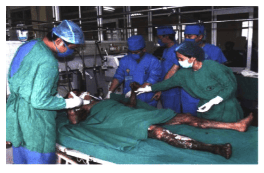
Khi chuyển sang sốc nhược, bệnh nhân có thể bị suy hô hấp cấp
3. Subclinical
There may be manifestations of hemoconcentration, water and electrolyte disturbances, acid-base balance disorders, urinary excretion dysfunction.3.1 Health
Hemoconcentration: increased red blood cells, increased hematocrit, increased Hb (representing plasma loss due to escape through the burn and into the intercellular space), white blood cells increased (due to hemoconcentration, due to increased reflexes).Hemolysis: Concentration of blood may be obscured by hemolysis with the following manifestations: normal HC, small HC, decreased Hb.
Coagulation disorders : Possible early stage hypercoagulability. Rarely, disseminated coagulation syndrome
3.2 Disorders of water and electrolytes: The most important ones are Na+ and K+
K + increase: due to the escape and translation of K + in the injured tissue into the intercellular space (blood K + increases when a large amount of muscle is injured). Na+ decreases due to intracellular Na+ translocation and Na+ loss due to plasma leakage. Blood Na+ decreased with blood Cl- decreased. Disturbances in acid-base balance: due to increased acid production in the body and due to acid stagnation (renal failure). Characteristics of metabolic acidosis with the following manifestations: increased respiration (CO2 excretion), decreased blood pCO2, decreased pH , HCO3 decreased . Other tests: Blood protein decreased, blood glucose increased due to decreased insulin secretion, increased secretion of Glucagon, Adrenalin, ACTH, Glucocorticoid caused urine glucose (+), Proteinuria (+). Urinary excretion disorders: Blood nitrogen, lactic acid, blood urea, blood creatinine increased. Related to electrolyte disturbances in urine:
K + urine increased due to increased K + excretion. Na+, CL- decrease due to decrease in blood. There are red blood cells, white blood cells, granulosa casts, urinary Hb (+), urobilin (+), urine density increases. Vinmec International General Hospital is one of the hospitals that not only ensures professional quality with a team of leading doctors, modern equipment and technology, but also stands out for its examination and consulting services. and comprehensive, professional medical treatment; civilized, polite, safe and sterile medical examination and treatment space.
Customers can directly go to Vinmec Health system nationwide to visit or contact the hotline here for support.





